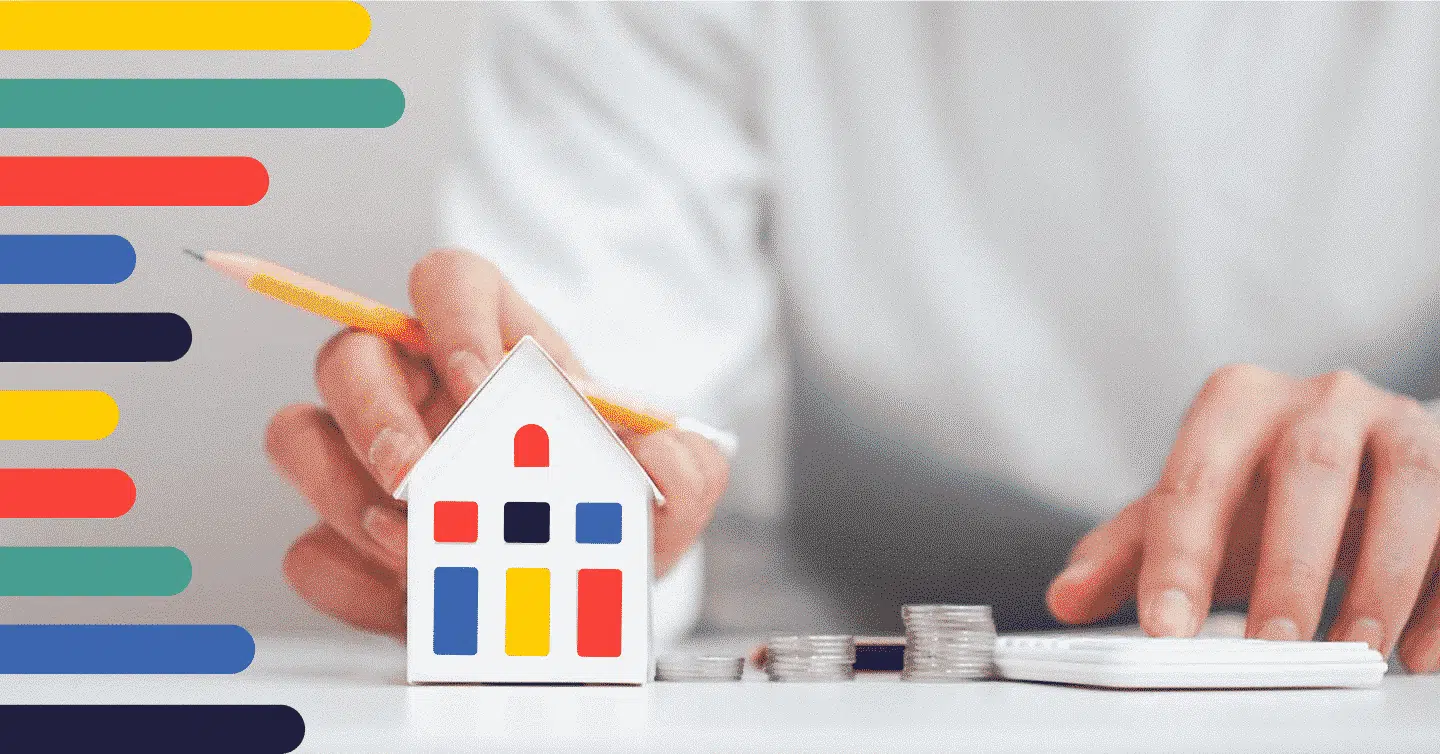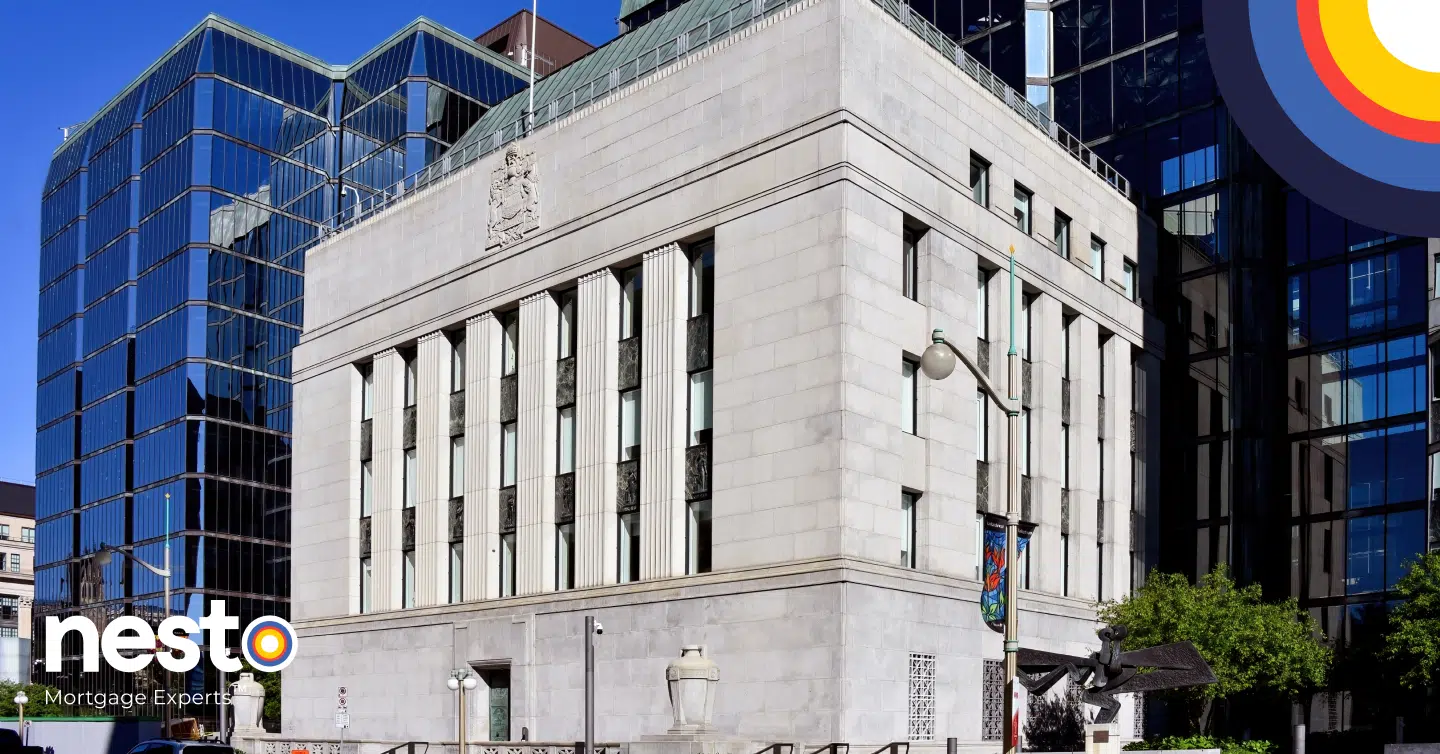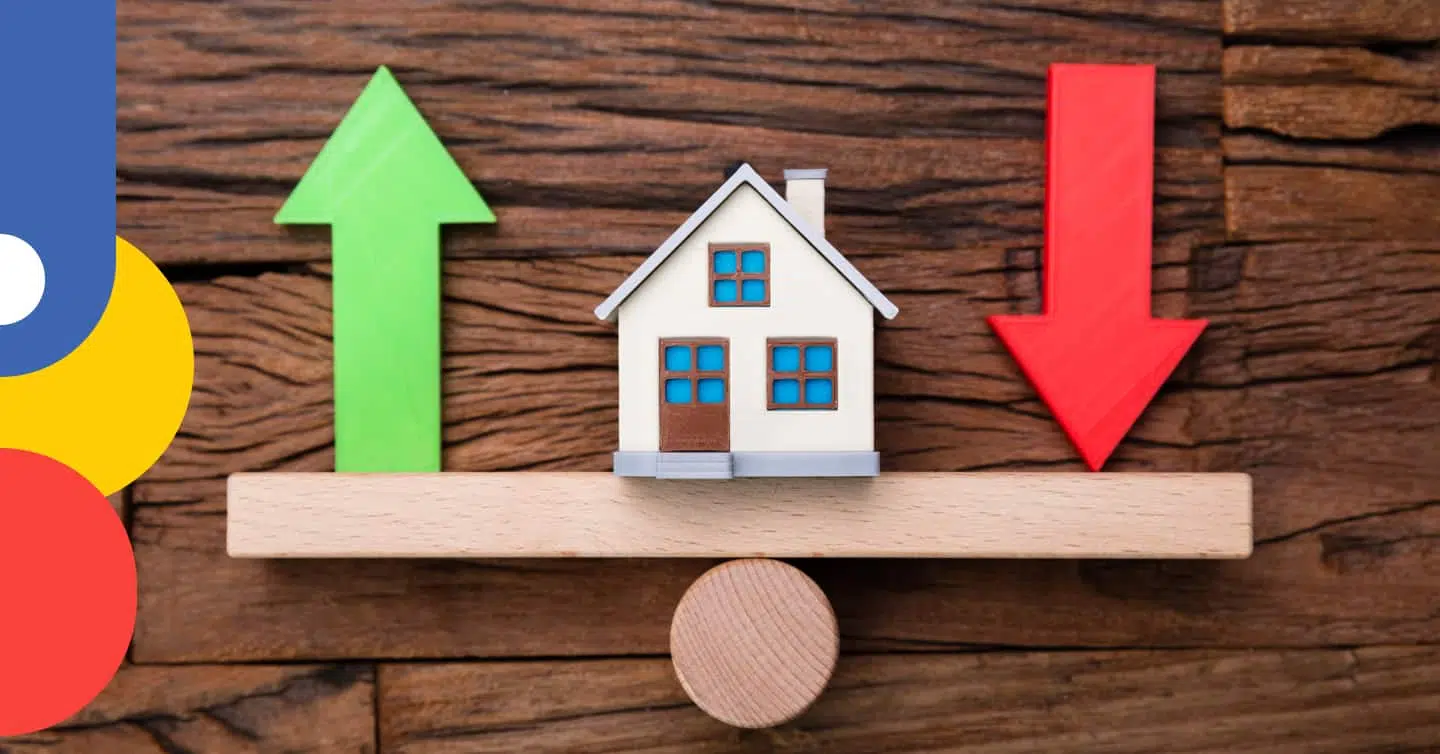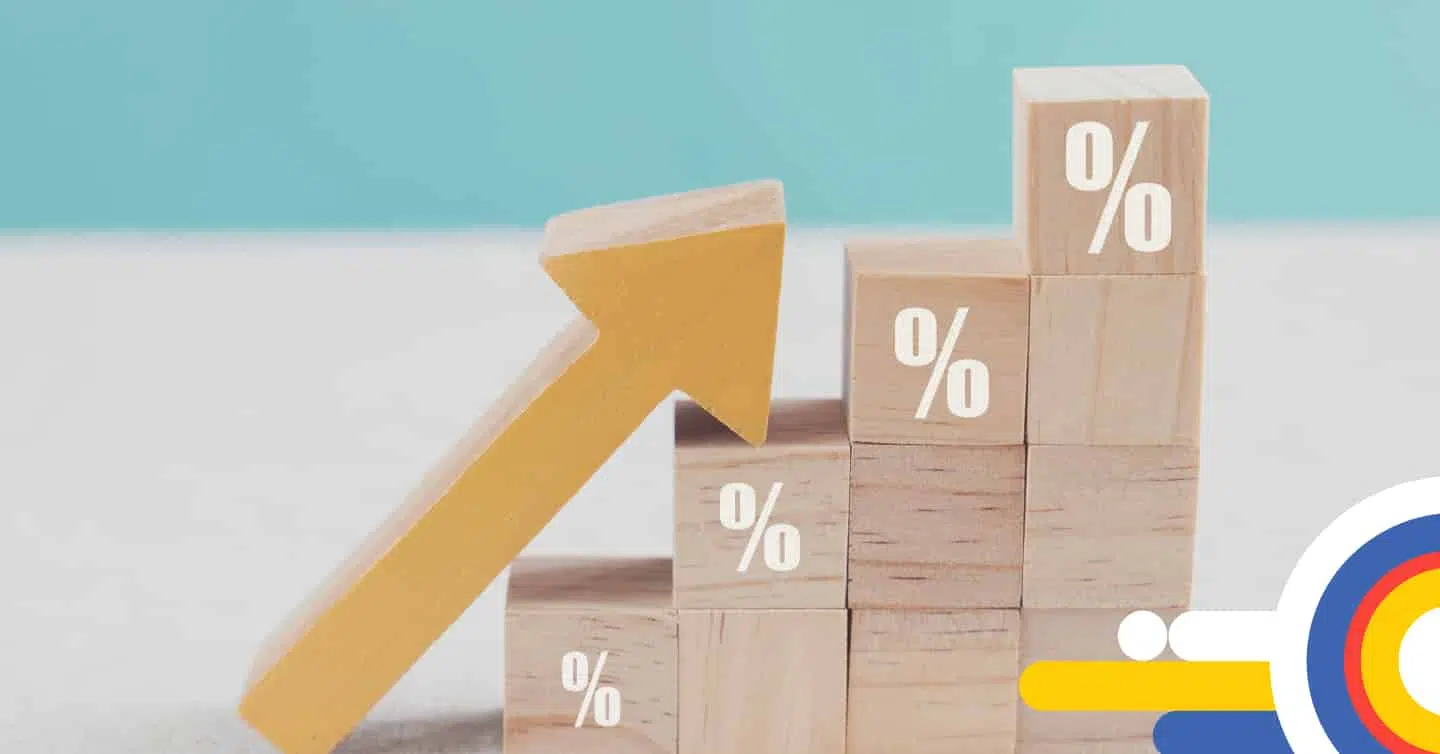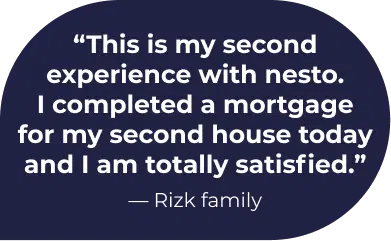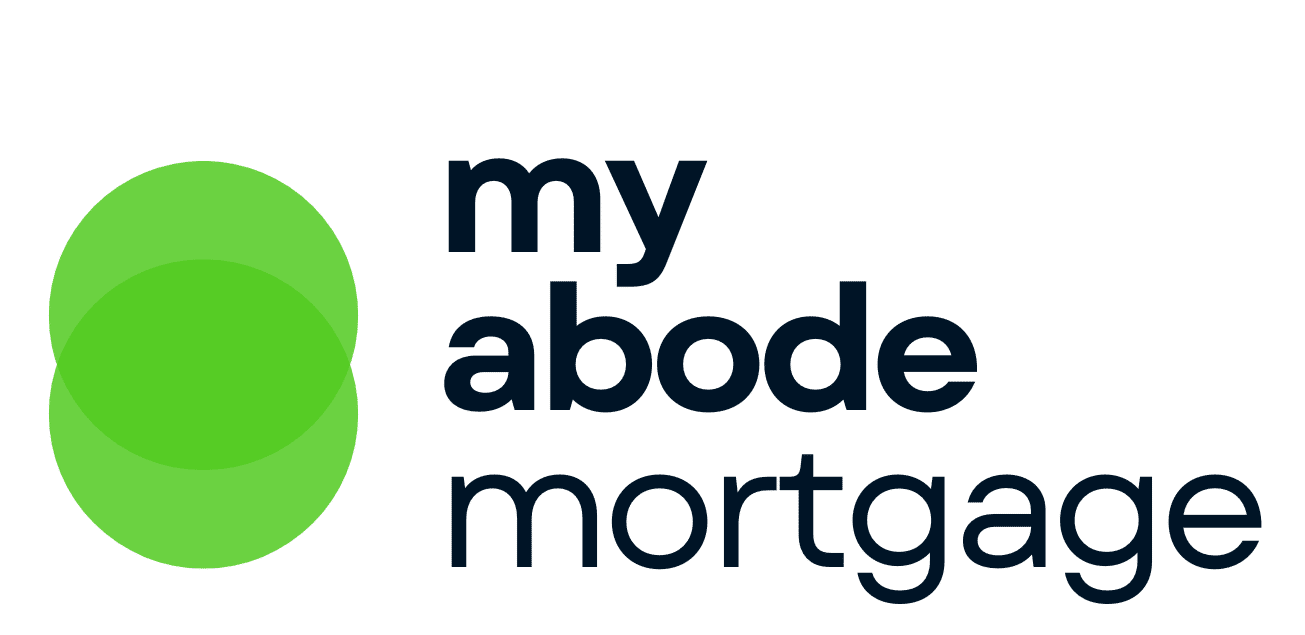
MyAbode Mortgage
Payment Calculator
Happy nesto customers
Did nesto save you a headache (or two)? Did you get a mortgage payment that works for you? If so, we’d love to hear more about it! Leave a review — Our team loves to see you happy!
An average of 4.5 out of 1,150 reviews
Mortgage Payment Calculator FAQ
How do I use a mortgage payment calculator?
To use a mortgage payment calculator, start by choosing the type of mortgage (new, refinance, renewal). Then, fill out the mortgage details (asking price, downpayment, amortization, payment frequency, interest rate, optional taxes, fees, etc.).
The calculator will provide a payment summary that breaks down the total mortgage payment based on the frequency you selected, the amount of mortgage default (CMHC) insurance that will be added to the mortgage amount (if required), as well as the principal and interest paid over the term and amortization.
The amortization schedule tab will show you a breakdown of the total principal and interest paid and the remaining mortgage balance for the end of each year.
What is an amortization schedule?
An amortization schedule is the life of the mortgage. This is the total time it takes to fully pay off the principal and interest on the borrowed amount. Amortizations are up to 25 years on mortgages with down payments of less than 20%, while mortgages with down payments of more than 20% can typically go up to 30 years or more, depending on your choice of mortgage solution and lender.
Amortization schedules will help you see your progress toward becoming mortgage-free. At any point during the amortization period, you can see what portion of each mortgage payment goes toward the principal and interest. Once you reach the half-life of your mortgage, you’ll notice that a higher proportion of your payment goes to your principal.
How does my income impact my mortgage payment?
Your income is one key factor that lenders use to determine how much they are willing to lend you for a mortgage. Lenders do this using debt service ratios, which show them whether you have the capacity to take on the debt and repay the mortgage.
The gross debt service ratio (GDS) is the amount of your pre-tax income that would be spent on household debts. They will look at the mortgage payment, property taxes, heating, and 50% of condo or maintenance fees (if applicable). Typically, the maximum allowable GDS ratio is 32% for uninsured mortgages and 39% for insured mortgages.
The total debt service ratio (TDS) is the pre-tax income you would spend to service all debts. In addition to the debts that make up the GDS ratio, TDS will also account for student or car loans, child or spousal support, and credit card or line of credit payments that you may have. Typically, the maximum allowable TDS ratio is 40% for uninsured mortgages and 44% for insured mortgages.
How do I calculate my monthly payment on a mortgage?
An online mortgage calculator is the easiest method for calculating your mortgage payment. You input the home price, down payment, loan term, and interest rate. The calculator then computes your monthly payment, including principal and interest. Payment calculators often include options to factor in other costs, such as property taxes, home insurance, and, in some cases, mortgage insurance.
What’s the difference between a high-ratio borrower and a low-ratio borrower?
A high-ratio borrower puts down less than 20% as a downpayment and has a loan-to-value (LTV) ratio of 80% or more. This type of borrower will require mortgage default insurance. A low-ratio borrower puts down more than 20% as a downpayment and has an LTV of less than 80%. This type of borrower will not require mortgage default insurance.
What is the most common mortgage payment schedule?
The most common mortgage payment frequency is the monthly payment. This is typically the default payment option, where mortgage payments are made once per month or 12 times a year.
Do people most commonly choose a 5%, 10% or 20% downpayment?
The most common downpayment depends on the borrower. Most first-time homebuyers (FTHB) will opt for the minimum downpayment option available, which is 5% on the first $500,000 and 10% on the remaining amount between $500,000 and $999,999. For borrowers in large cities where home prices are well above $1 million, a 20% downpayment or more would be required.

